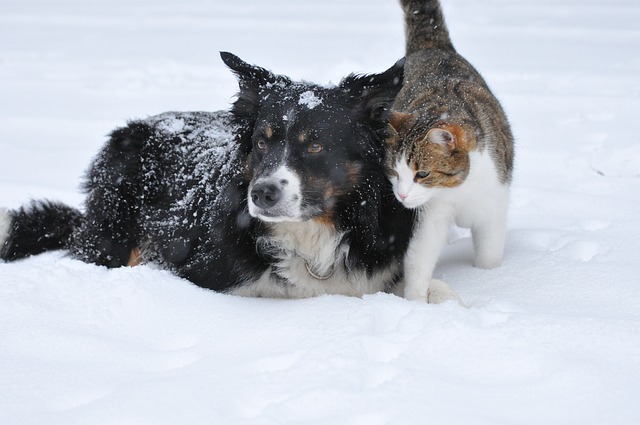
the scientific study of pet nutrition by veterinary nutrition specialists and experts.
New Year’s Resolutions for Pet Owners

It’s that time again when we all make goals for the new year. Sometimes our resolutions are fun, others are focused on our health or on our career. While our pets can’t make their own resolutions, including your pet in your resolutions may help keep you on track with your own goals (such as fitness) as well as enriching your pet’s life throughout the coming year.
What kind of pet resolutions are we talking about? Here are some suggestions:
- Spend 10-15 minutes each day teaching your pet (dog or cat) a new trick or behavior. This is a great way to bond with your pet and is a lot of fun! If you don’t have experience with trick training (or cat training) – pick up a book or head online. Clicker training in particular is a fun, easy-to-learn way to teach both tricks and useful behaviors (e.g. being still for nail trims!) to your pet. If it can be used to teach a tiger to stand for a blood sample to be taken in a zoo, imagine what you can teach your pet!
- If your pet is overweight (ask your vet for their opinion), resolve to help them lose weight this year. Excess weight puts extra stress on joints and can increase your pet’s risk of many health problems. Help them be the healthiest that they can be in 2019. Talk to your vet about a safe plan and check out our articles on weight loss.
- Get your dog (and yourself) more exercise! Resolve to spend more time outside playing, walking, and exploring the world, even when the weather is cold. As long as you make sure your dog is warm enough and that you avoid winter hazards such as salted sidewalks and roads, your exercise routine can be all-seasons.
- Reassess your pet’s diet including food, treats, and supplements. Are you feeding a boutique, exotic ingredient, or grain-free diet that may increase your dog’s risk for heart disease? Are you feeding a high quality diet in the right amounts to keep your pet lean? If you are feeding supplements, are they safe and likely to be helpful? Figure out how many calories you are feeding your pet each day – is he or she getting more than 10% of the daily calories from treats, which is the maximum recommended to avoid unbalancing your pet’s diet?
- Enrich your pet’s environment and life. For a cat, consider purchasing a window perch, buying or making a large cat tree, or giving them access to a screened-in porch. Start using a food dispensing toy so that your cat can “hunt” for her food. Food dispensing treats are also great for dogs and can slow down greedy eaters. If your dog likes other dogs, schedule “play dates”. Consider trying out a new activity that allows your dog to use her inborn skills such as herding, fly ball, lure coursing, or swimming. You can find info on making your pet’s environment more interesting at The Indoor Pet Initiative.
Happy New Year! Wishing you and your pets the best in 2019!
Want to read more information on feeding your pet?
Subscribe to always know when we add new material!
Recommended Posts

Can Diet Help With My Dog’s Seizures?
January 18, 2024

The Most Popular Holiday Foods…That Your Pet Should Avoid!
December 08, 2023

Veterinarian Recommended Pet Foods: What You Need to Know
November 05, 2023

